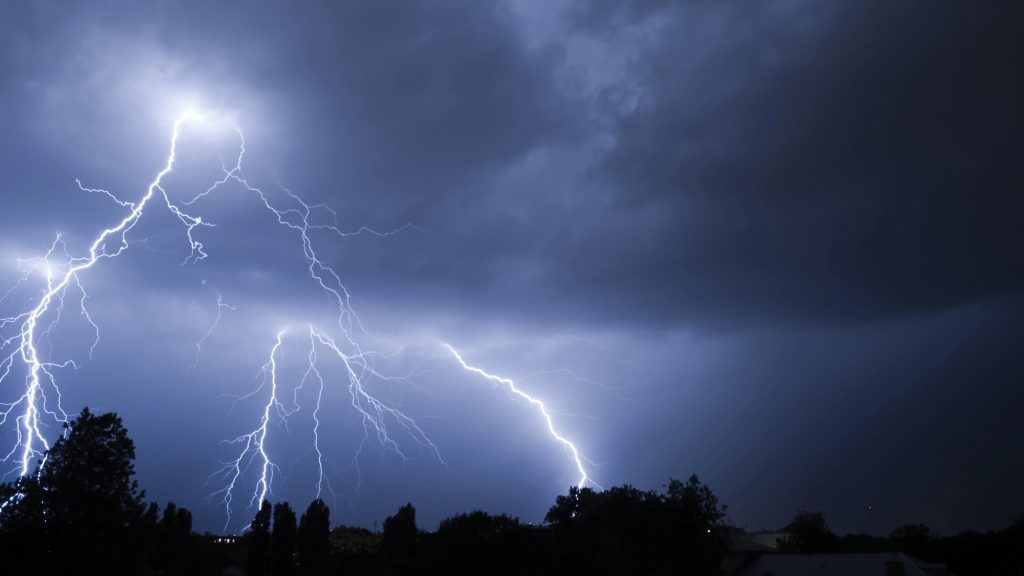NASA’s U-2 spy plane found gamma rays in 90% of lightning storms

Thunderstorms create a lot of wind, rain, and lightning, but many people aren’t necessarily aware of another common byproduct: gamma radiation. Thanks to a creative retrofit of an old U-2 spy plane courtesy of NASA, however, researchers are finally able to conduct direct analysis of these microsecond bursts of radioactive energy that occur across the planet every day. Now, some of these latest findings are available in two new studies published on October 3 in the journal Nature—and they indicate radioactive storms happen all the time.
Experts accidentally detected gamma rays in thunderstorms in the 1990s, when NASA satellites designed to study supernovas and other high-energy cosmic bodies recorded some of their intended subjects’ telltale signs right below them. Ever since then, researchers have made do by studying as much as possible using these satellites and equipment that aren’t specifically calibrated for lightning.
Even so, the mechanics behind the radiation generation has gradually come into focus: As thunderstorms develop, windblown drafts of water droplets, ice, and hail combine into a mix that creates electric charges similar to static electricity. Positively charged ions then move to the top of the storm as the negatively charged ions shift downward, building up an electric field experts compare to the power of 100 million AA batteries. Energized particles including electrons accelerate within this newly created field, often fast enough to knock additional electrons off of air molecules. These interactions then snowball to eventually produce enough energy to generate millisecond blasts of gamma rays, antimatter, and other radiation particles.
This gamma radiation is so prevalent that pilots have even documented faint glows within storm clouds. Despite this, unknown factors appear to prevent them from creating explosive reactions.
“A few aircraft campaigns tried to figure out if these phenomena were common or not, but there were mixed results, and several campaigns over the United States didn’t find any gamma radiation at all,” Steve Cummer, Duke University’s William H. Younger Distinguished Professor of Engineering and co-author of both studies, said in a statement on Wednesday.

But after years of relying on workarounds, NASA recently offered Cummer and colleagues one of its augmented U-2 planes, now called an ER-2 High-Altitude Airborne Science Aircraft. Capable of ascending to altitudes as high as 72,000 ft while traveling 475 mph, the Cold War era spy plane is perfect for speeding across vast distances to observe multiple thunderstorms for gamma radiation. Once outfitted with the right observational tools, experts like Cummer hoped NASA’s ER-2 variant could “address these questions once and for all.”
The results surprised even him and his colleagues.
“There is way more going on in thunderstorms than we ever imagined,” Cummer explained. “As it turns out, essentially all big thunderstorms generate gamma rays all day long in many different forms.”
Over one month, 10 flights were conducted over storms in the south Florida tropics—9 of which contained the glowing “simmer” of gamma radiation that was far more dynamic than researchers hypothesized.
“[It] resembles that of a huge gamma-glowing boiling pot, both in pattern and behavior,” University of Bergen professor of physics and study co-author Martino Marisaldi said on Wednesday.

Many confirmed sightings lined up with those first seen by NASA satellites over 30 years ago, almost always in tandem with active lightning. This implies that lightning is most likely a major instigator of gamma ray generation through supercharging already an electric field’s high energy electrons. But other recordings yielded entirely new discoveries.
According to the research team, at least two additional types of short gamma busts can occur in thunderstorms—one lasting less than a thousandth of a second, and another that forms around 10 separate bursts over around a tenth of a second. For Cummer, these are the “most interesting” finds.
“They don’t seem to be associated with developing lightning flashes. They emerge spontaneously somehow,” he said, adding that some of the data suggests the gamma bursts may link to certain thunderstorm processes responsible for starting lightning flashes. For now, however, he said those processes “are still a mystery to scientists.”
Answers to these and other unsolved storm phenomena may one day come through additional ER-2 flights high above gamma ray-laden storms. Until then, Cummer stresses that no one needs to worry about the proliferation of gamma radiation “boiling pots” high above their heads.
“The radiation would be the least of your problems if you found yourself there [in a thunderstorm],” he said.










